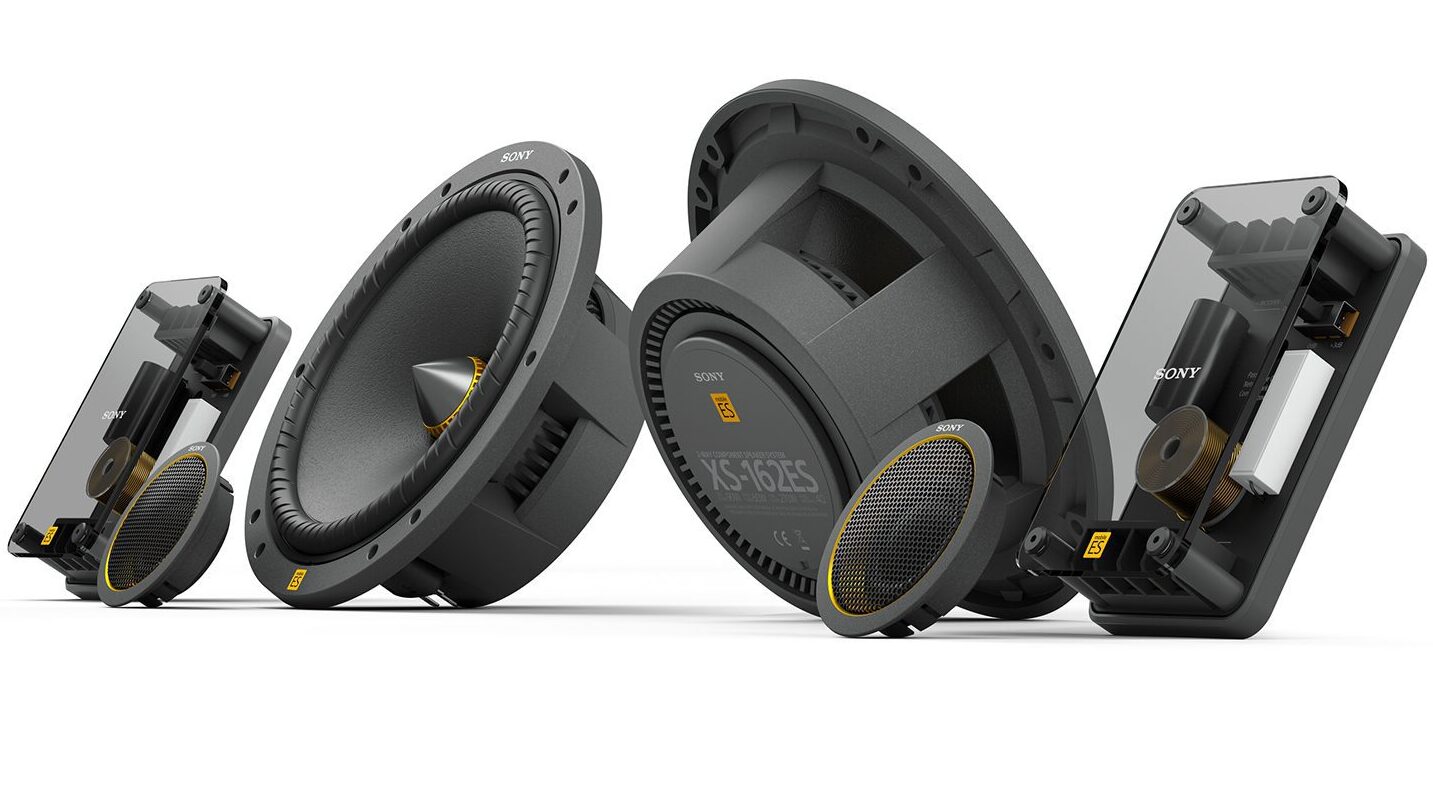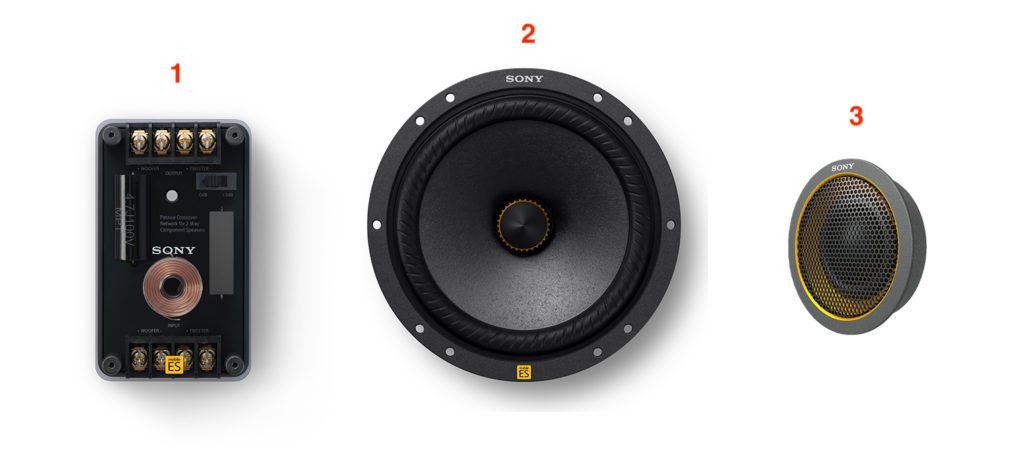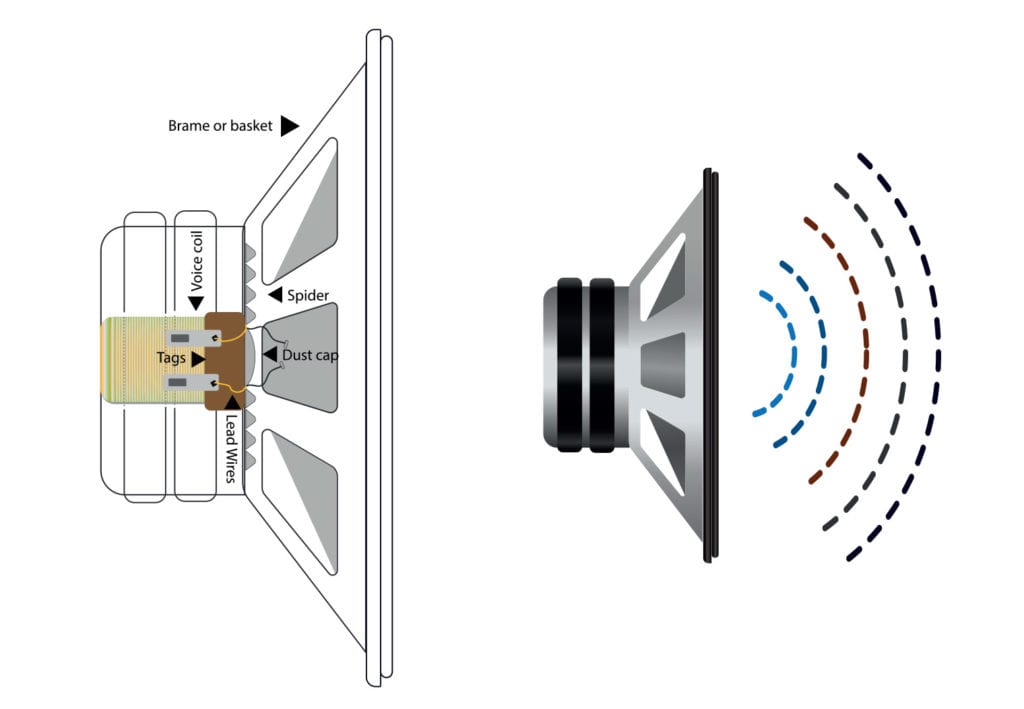Home > Learn > Understanding Component Speakers for Your Car
Unless you have a car with an upgraded stereo from the factory, it’s probably time to look at your options. Before you upgrade to an aftermarket stereo though, you'll want to ensure all of the pieces work well together. For example, you aren’t going to invest all of your money into a new head unit and neglect the value of a good subwoofer. The same goes when considering the component speakers for your car. While these speakers might be smaller and out of mind, you must think about the effect they have on the sound quality in your vehicle.
To help you understand the component speaker better, we will look at its most significant parts. We will also discuss how the component speaker works and show you its benefits.
What is a Component Speaker?

The component car speaker set includes a pair of tweeters to handle the high-frequency sound, along with mid-bass drivers that reproduce the midrange frequency. They come with either a separate or built-in crossover that's engineered to the specs of the drivers – it handles the limitations of the frequency range to reduce distortion and unpleasant sounds.
The difference between component and coaxial speakers is that the latter combines the tweeter and woofer into a single unit. These are used to get superior sound out of one opening, but both speakers can be compromised in this setting.
Major Parts of Component Speakers

Before you can understand how component speakers for your car work, you must first take a look at the parts that are included. In the component speaker, you will find three main parts.
1. Crossovers
The crossover is responsible for guiding all of the sounds in the speaker. Information arrives from the head unit or amplifier. From there, the crossover determines which frequencies should be routed to each part. Anything above the fixed point is moved onto the tweeter, while the frequencies below are sent to the woofers. Most component speaker sets include separate outboard crossovers.
2. Midrange/Midbass Drivers
The woofers of the component speakers deliver the lower bass frequencies. These are typically mounted in the factory location in the doors. Because these speakers operate separate from the tweeters, they're able to produce sound more efficiently with less interference and distortion.
3. Tweeters
The tweeters deliver the higher frequencies of the speakers. When you are listening to music, the tweeters are responsible for sending out everything that isn’t handled with lower bass tones. These high frequencies are directional, more so than what comes from the subwoofers and mid-woofers. Therefore, they need to be mounted as close to the ears as possible. However, the tweeters should remain close to the woofers, so the frequencies hit the ear at the same time.
How Do Component Speakers Work?

You might have gained a little understanding regarding the operation of component speakers while looking at the various parts, but we will take it a little further. With component speakers, the various drivers are separated, ensuring each is able to do its part effectively. There is also a crossover included to create more efficiency.
For contrast, a coaxial speaker combines both the tweeter and woofer into one unit. These are typically the factory-installed speakers but can also be purchased aftermarket. And while this option allows you to put a lot of function into a small space, the sound can be compromised by having the various parts together.
On the other hand, component speakers are sold in multiple units. You install the drivers in various locations in the vehicle, allowing each component to do its job with the most efficiency/effectiveness. The varying range of sounds creates a concert-like experience for optional quality. You can also add a separate subwoofer and amplifier to the system to take everything up a notch.
In the component speaker setup, the sound is received from the head unit and transferred to the crossover (sometimes via an external amplifier). From here, the crossover is responsible for ensuring all of the right frequencies get routed to the appropriate location. If installed properly, you are left with an immersive sound experience that's tailored to the interior of your vehicle.
If you're looking for even more detail, be sure to check out our Understanding the Anatomy of a Speaker's Components article.
Benefits of Component Speakers
With the addition of component speakers for your car, you can expect the following benefits.
Superior Tonal Clarity
Because of how the crossover routes the sound, the tweeters and woofers are only responsible for playing the assigned frequencies. The crossover is intended to prevent each aspect from stretching beyond its limits, ensuring the speakers only play what it is meant to handle. Although this is not a substitution for proper tuning, it does help prevent complete failure of your speakers.
Optimized Sound Stage
Unlike coaxial speakers, you can have a lot more control of the sound stage with component speakers. Let us explain.
Factory systems with coaxial speakers often create a fog of sound that’s hard to adjust. By placing your tweeters in the dash, sail panels or A-pillars, you can elevate the state of your sound, allowing your music to sound like it's coming from a much more natural position. Ever heard a stereo with speakers that are in the kick panels without a driver in the dash? It's less than ideal, and really doesn't sound like it would in a concert or even if you were listening to music outside. By separating the drivers of a component speaker, the sound is no longer emitted from behind you or at your knees alone. They call this adjusting the ‘sound stage'.
Disadvantages of Component Speakers
While we are huge advocates for having component speakers in your vehicle, there are some downsides you want to consider before purchasing a new set.
Higher Cost
In general, component speakers will cost more than coaxial of the same size. Of course, there are exceptions to this rule based on the brand name and level of quality that you are looking at. However, if you compare the 6.5” component speakers to 6.5” coaxial speakers, you will typically find a little bit of a cost difference.
With that in mind, you have to ask yourself how much of an investment you are willing to put into better sound quality. If you are looking for an elevated sound, the small price increase isn’t going to stop you from making the leap.
Tougher Installation
When you are simply replacing the factory speakers in your vehicle, installation isn’t difficult. You take the old speakers out and replace them with the new set. However, adding component speakers to locations that didn't already house a speaker or tweeter can prove to be a little more challenging.
First, you need to find an appropriate location to mount your crossover. Plus, if your factory speakers don’t come with tweeters, you might need to drill a hole in the door to place them. If this is something you aren’t comfortable with, you will need to take your vehicle to a professional installer, which costs more money.
Final Thoughts
If you are looking for a better in-vehicle sound, you can’t go wrong with a set of component speakers. However, you can heighten the sound even more with an aftermarket amplifier. Once you start upgrading your factory speakers, you will catch the bug too. The need to continue clarifying the sound can quickly become an addiction.
